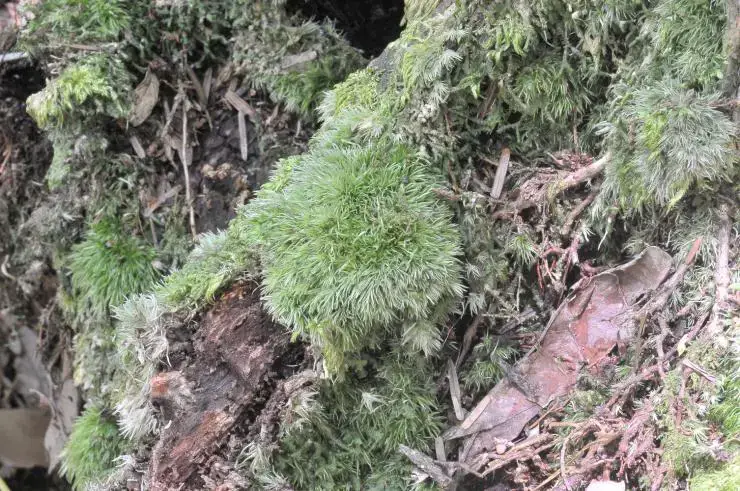
7037e79d418c961c5141889e083833ce.jpg from: https://taieol.tw/muse/digi_object/2355523fe7d6b11d4b7a8ac495911fd7
Schlotheimia rufopallens: A Fascinating Moss of the Orthotrichaceae Family
Introduction
The world of mosses is full of fascinating species, each with their own unique characteristics and ecological roles. One particularly interesting moss is Schlotheimia rufopallens Müll.Hal., a member of the Orthotrichaceae family. In this blog post, we’ll take a closer look at this captivating bryophyte, exploring its morphology, global distribution, habitat preferences, and ecological significance. Get ready to dive into the miniature world of Schlotheimia rufopallens!
Background on Mosses
Before we focus on S. rufopallens specifically, let’s briefly review what mosses are. Mosses are small, non-vascular plants in the division Bryophyta. They lack true roots, stems, and leaves like other land plants. Instead, they have rhizoids that anchor them and absorb water and nutrients. Mosses reproduce via spores rather than seeds and are found in diverse habitats worldwide, from arctic tundra to tropical rainforests.

5856d54f21c593d9017a4c708465902e.jpg from: https://openmuseum.tw/muse/digi_object/944be5363af1050246cc941b5ca41998
Morphology and Identification
Schlotheimia rufopallens is a pleurocarpous moss, meaning its reproductive structures (sporophytes) grow laterally from the stem rather than at the tips. The shoots are creeping to ascending, irregularly branched, and typically 1-3 cm long. The leaves are ovate-lanceolate, 1.5-2.5 mm long, with a short apiculus at the tip. They have a strong costa (midrib) that extends nearly to the apex.
One distinguishing feature of S. rufopallens is the reddish-brown coloration of its leaves, especially when dry, which is referenced in its specific epithet “rufopallens”. The leaf cells are rounded-quadrate to short-rectangular. Capsules are cylindrical and ribbed when dry, borne on a seta 5-12 mm long.
Global Distribution and Habitat
S. rufopallens has a pantropical distribution, found in tropical regions around the world including Central and South America, Africa, Southeast Asia, and Oceania. It grows as an epiphyte on tree bark and branches in humid forests from lowland to montane elevations. The species prefers partially shaded sites with moderate to high humidity.
In the Americas, S. rufopallens ranges from Mexico to Brazil. In Africa, it is known from countries like Cameroon, Gabon, Tanzania, and Madagascar. The moss is also found in tropical Asia from Sri Lanka and India to Indonesia and the Philippines, as well as on Pacific islands like Fiji and Samoa.
Ecological Roles and Adaptations
Like other epiphytic mosses, S. rufopallens plays important ecological roles in its forest habitats:
- Microhabitat – The dense mats formed by the moss create microhabitats for various invertebrates and other organisms.
- Water and nutrient retention – Moss clumps trap and retain moisture and atmospheric nutrients, regulating humidity and nutrient cycling in the canopy.
- Substrate for other epiphytes – Mosses like S. rufopallens help build up organic matter on branches that can then be colonized by other epiphytes like orchids and ferns.
To thrive as an epiphyte, S. rufopallens has several adaptations:
- Water-absorbing leaves – The concave leaves readily absorb and hold moisture from rain, dew, and humidity.
- Desiccation tolerance – The moss can dry out completely and rehydrate when water is available again, an important trait in the variable canopy environment.
- Asexual reproduction – In addition to spores, S. rufopallens can reproduce vegetatively via deciduous shoot tips, enhancing its ability to disperse and establish on trees.
Conclusion
Schlotheimia rufopallens is a prime example of the incredible diversity and ecological importance of mosses. From its reddish leaves to its pantropical distribution and role as an epiphyte, this species illustrates the fascinating adaptations and beauty to be found in the miniature world of bryophytes. Next time you’re walking through a tropical forest, take a moment to appreciate the intricate community of mosses and other epiphytes cloaking the trees around you. What other secrets might these tiny plants hold?